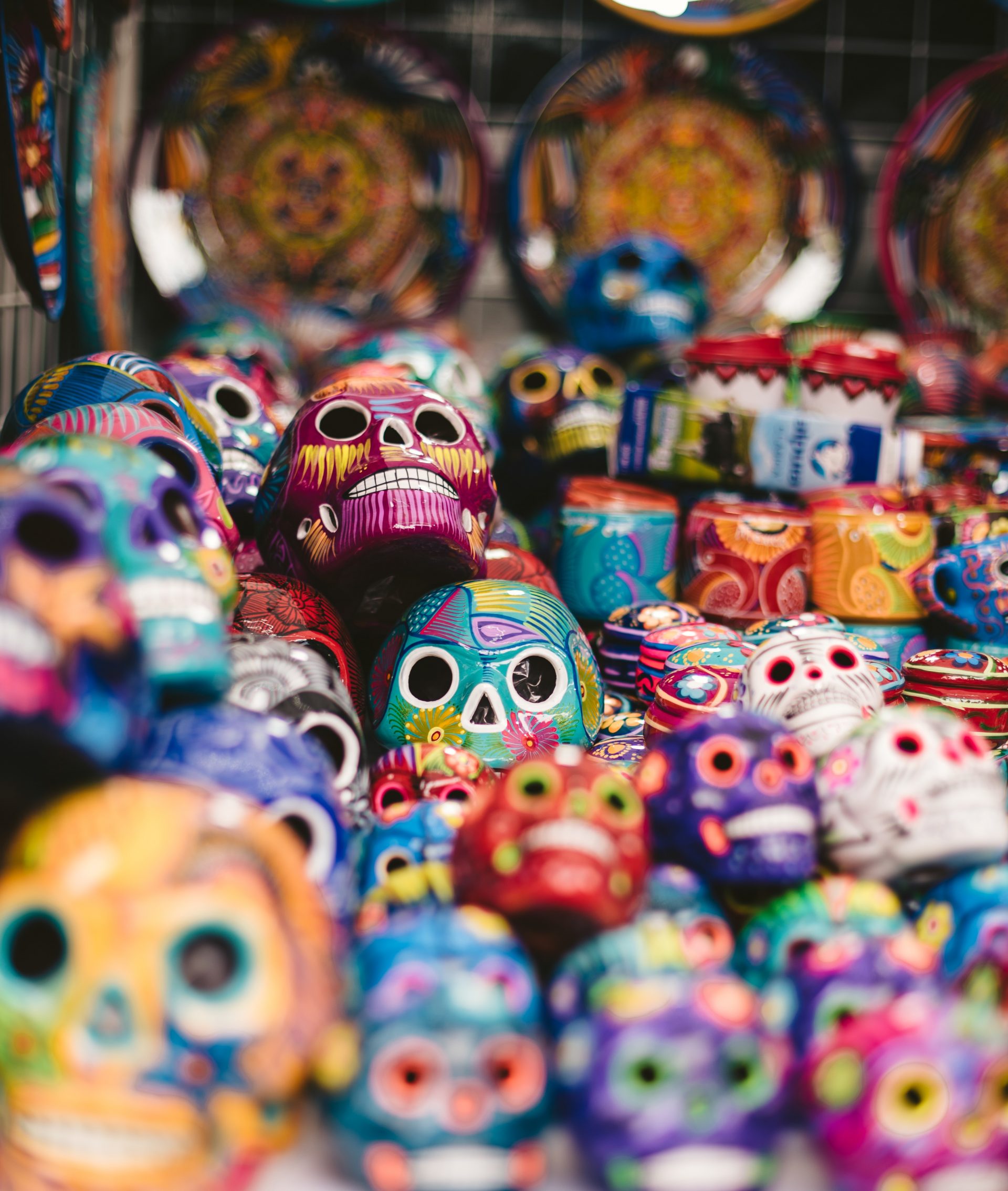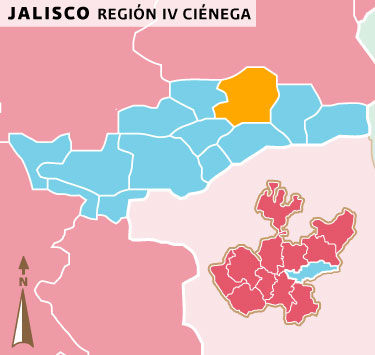
The power of traditions and their relationship to diaspora tourism. The journey to return home
Dra. Driselda Sánchez Aguirre1
Mtro. Alejandro Sánchez Rodríguez2
1 driselda@geografia.unam.mx Investigadora postdoctoral. Departamento de Geografía Económica. Instituto de Geografía de la UNAM
2 asanchez@uaem.mx Jubilado de la Facultad de Artes de la Universidad Autónoma del Estado de Morelos UAEM
Abstract
Cultural manifestations are links that unite peoples since ancient times and provide identity to social groups. With migration, the celebration of festivals and iconic celebrations of certain places is a motivator for the person who migrated to be able to return momentarily to one’s place of origin. The example of Las Margaritas (Mexico) is presented as a form of cultural tourism of the diaspora during the Día de los Muertos (Day of the Dead). This tourism phenomenon is linked to the attachment to cultural roots, memories and nostalgia in territories that are not foreign to the traveler.
Resumen
Las manifestaciones culturales son eslabones que unen a pueblos desde tiempos ancestrales y dotan de identidad a grupos sociales. Con la migración, la celebración de festivales y celebraciones icónicas de ciertos lugares con un motivador para la persona que migró de poder regresar momentáneamente a su lugar de origen. Se presenta el ejemplo de Las Margaritas (México) como una forma de turismo cultural de la diáspora durante Día de los Muertos. Fenómeno turístico que está ligado al arraigo de raíces culturales, recuerdos y nostalgia en territorios que no son ajenos al viajero.
“Me voy pa’l pueblo, hoy es mi día, voy a alegrar todo el alma mía…”
Excerpt from a 1949 song performed by Los Panchos.
Every winter, Uncle Fermin and his family travel back to Mexico from the United States to visit grandma and relatives back home, arriving with many good wishes to meet up again and usually full of gifts. They will spend a couple of weeks here and then return to what they now call home, a place far away from the original family. This story is very familiar to many Mexicans.
Uncle Fermin and his family, like many people, had to emigrate from their place of origin searching for new and better opportunities. This phenomenon, in addition to creating a process of external and internal mobility, is part of an interesting tourism process. Tourism related to the migrant population returning to their place of origin for a tradition or festival has been poorly studied.
Why move away from home?
By nature, humans have the ability to move for various reasons, a trait that has been observed since the origins of humankind when humans naturally classified themselves into nomads and sedentary individuals. Nomads, by definition, moved from one place to another searching for better living conditions, whether it was to find food or to seek shelter from the weather. These movements also involved learning processes, including the development of methods and tools for hunting, construction, and agriculture. Once their basic needs were met, certain subgroups preferred a sedentary lifestyle. Sedentary living has multiple connotations; when viewed through historical behaviors, it is an adjective that describes individuals who chose to stay in a specific space for tasks related to caregiving, whether for the land or other people, often leading to an attachment to the territory they inhabited.
Since humans became sedentary, migration has been a constant in history. The direct causes of migrations, their intensity, and the direction of the flows vary depending on the time period and geography but have always been present. Migration flows can be driven by economic and survival reasons: when the land becomes infertile, natural resources are depleted, or natural disasters occur. These phenomena give rise to movements of entire communities from one place to another.
In addition to the above, in the contemporary world, younger generations increasingly have less attachment to their places of origin. This allows them to move easily between territories, creating a nomadic-like behavior characterized by constant displacement in the pursuit of improving various factors contributing to their personal development. Despite the decreasing attachment to places in newer generations, the vast majority of people who migrate tend to maintain a strong emotional bond with the territory where they were born or where they lived for most of their lives. Local cultural traditions are an element that keeps the frequent desire to return through brief trips filled with nostalgia and memories.
Return home as a tourist
Traveling is usually associated as a way of seeing the “other”, of discovering differences between the place where we currently reside and the place of origin, but return trips or diaspora tourism alludes to people who travel to a place they already know and that is culturally and socially very close to them, that is to say that there is a connection with the place beyond mere leisure (Larraza Azpiazu, 2020) and instead of meeting the “other” they meet with themselves.
Diaspora tourists, a term used in academia to describe this type of travel, are not entirely alien to the behavior of traditional tourists, as they also tend to take pictures, contemplate the scenery, buy souvenirs, participate in local cultural events that are not available in their current place of residence, plan their trips in advance and so on. However, they are distinguished from conventional travelers by certain characteristics:
- This type of tourism is, in a way, independent of seasonal peaks, unlike international tourism.
- Unlike ordinary tourists, the diaspora tourist culminates their travel process with signs of affection and farewells that, more than a goodbye, augur a see you soon.
- The visit is to a known territory, previously considered their homeland.
- They have a sense of community that preserves the identity of people who have migrated.
- The territory of origin has great relevance for the diaspora tourist.
In addition to the sentimental bond with the people who still reside in the place of origin, the motivations for which diaspora tourists travel back home are varied, from private social gatherings such as birthdays or funerals, sporting events, some kind of business, and a motivator that has been little talked about: popular festivities. The traveler has left behind not only their family and friendship ties, but also spaces and traditions that motivate them to return when these are held.
A more detailed example occurs in the mexican state of Jalisco, in the town of Las Margaritas (Figure 1). The place has representative spaces for the locals, such as the town church, a small central garden, among others. Although most of the young people tend to migrate because they cannot find a place to continue their studies or work, many of them return every year to celebrate the Day of the Dead in Las Margaritas, turning the occasion into a re-encounter with family and friends through a popular celebration.
Figure 1.

Source: https://www.atotonilco.gob.mx/ciudad
The Day of the Dead in Mexico
Mexico is a country with great cultural diversity, combining the legacy of dozens of native groups with the Hispanic Judeo-Christian heritage, which has endowed the territory with countless valuable intangible expressions, among which the indigenous festivity dedicated to the dead (known as Day of the Dead), was the first Mexican manifestation inscribed on the UNESCO list as intangible cultural heritage in 2008, becoming a cultural and tourist icon of the country. It is believed that during the first days of November, the souls of loved ones who have passed away cross the threshold between life and death to return momentarily to what was their home while they were alive; the inhabitants usually decorate the graves of the deceased, and perform rituals in which an altar is placed in honor of deceased family members; the local people share food, sing animatedly and pray with and for the souls that have returned to their homes.
Although Jalisco has several internationally known tourist spots (e.g. Puerto Vallarta), Las Margaritas is not one of them, and the tourist phenomenon that occurs every year, during the celebration of the Day of the Dead, is an example of diaspora tourism in all its splendor. Many of the people, who once left, return in November to remember and celebrate their deceased relatives. The few lodging spaces available are insufficient to receive so many returning people, who in many cases are not only the travelers who left, but also those who return with their families, wives, husbands and children, and due to the lack of sufficient lodging, they generally spend the night with their extended family (the grandfathers).
Globalization through tourism and media pressure on the Day of the Dead has induced vertiginous transformations that have developed new expressions related to the ritual, for example in Las Margaritas, where in addition to the traditional Day of the Dead ritual, a parallel show is held for visitors, where artists and groups of national and some international fame usually perform, turning the celebration of these festivities into a revelry.
Advantages and disadvantages of diaspora tourism
Normally, the returning tourist stays with relatives or, in a few cases, in a second residence previously acquired; since the most common situation is the first one, this implies a significant influence of the visited/hosts in several stages of the travel process, from the planning of dates for the visit, for example, to coincide with a celebration, to the realization of activities in the destination that are generally carried out at the pace of the hosts, this brings with it certain advantages and disadvantages.
Some benefits are the constant appreciation of family ties that are strengthened with each visit and are a way of honoring ancestors; another relevant benefit is that by having expert hosts (a role assumed by the relatives who have stayed), travelers have expert guides to the destination, which allows them to get closer to the latest news of the community, take away new learning and learn first-hand about sites or attractions that would otherwise be very costly in terms of time, money and access to information. Another benefit arises through the purchasing power of diaspora tourists, which is generally higher compared to what they had in their place of origin, making it possible to make certain types of business or real estate investments (a second home, for example) in the territory of return.
Among the main disadvantages of diaspora tourism are three: 1) the presence of a host (family), which makes it difficult to quantify the economic benefits, and it is difficult to have statistical and demographic indicators of tourists, which in turn, generates that private and governmental institutions pay little attention to it; 2) if travelers make real estate investments, these can lead to a phenomenon of gentrification that increases the rental price of housing for residents; 3) Although generally the return home leads to emotions of satisfaction and self-discovery, in some cases a cultural shock or an experience of disenchantment may occur, much depends on the circumstances and context of each traveler.
Conclusion
Diaspora tourists travel several miles to return to an environment that is familiar and comfortable to them, temporarily returning “home”. This feeling of “being at home” and the increasing migration of people making return trips, poses certain challenges to the understanding of travel and tourism and specifically to the very definition of the contemporary tourist.
Cultural manifestations are links that unite peoples since ancient times and provide identity to social groups willing to travel to participate in them. The Day of the Dead has become a form of diaspora tourism that is linked to the atachment of cultural roots, memories and nostalgia in territories that are not strange to the traveler.
Although returning “to the hometown” has become an increasingly common practice, the causes of this behavior taking the traditions as a main driver and the consequences in the economic and social activity that arise from this phenomenon are little documented, so there is not enough interest from public and private institutions to identify their needs, nor their behavior patterns, so that there is an important gap on how to take advantage of this type of visitor for the benefit of the visited destinations.
To know more, we suggest::
Gascón, J (2021) Turismo Doméstico de Diáspora: más allá del Turismo Rural. Alba sud, investigación y comunicación para el desarrollo. https://www.albasud.org/noticia/es/1329/turismo-domestico-de-diaspora-mas-alla-del-turismo-rural
Larraza, Aspiazu, M (2020). ¿Turistas? de diáspora. Los jóvenes dantzaris argentinos y sus viajes a Euskal Herria. Huellas (24) 2 https://dialnet.unirioja.es › descarga › articulo › 7592370.pdf
Acknowledgements
The first author thanks the financial support from the postdoctoral research grant UNAM DGAPA 2021-2023.
(Top image selected by CultSense, Photo by Jeremy Lwanga on Unsplash)
